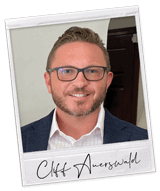Reverse Mortgage Payment Options: Lump Sum vs Line of Credit
 |
Michael G. Branson, CEO of All Reverse Mortgage, Inc., and moderator of ARLO™, has 45 years of experience in the mortgage banking industry. He has devoted the past 20 years to reverse mortgages exclusively. (License: NMLS# 14040) |
 |
All Reverse Mortgage's editing process includes rigorous fact-checking led by industry experts to ensure all content is accurate and current. This article has been reviewed, edited, and fact-checked by Cliff Auerswald, President and co-creator of ARLO™. (License: NMLS# 14041) |
If I do a reverse mortgage, can I pull all the money upfront as a lump sum, or do I have to have a line of credit? Is there a cost to pulling out all the money upfront?
HUD changed the program a little while back so that borrowers are capped at what they can pull from home based on the amount of what HUD calls the property charges that must be paid at the time of the loan.
The bottom line is that borrowers who need all their funds to pay off an existing mortgage* or are using it to purchase a new home can still use the entire reverse mortgage proceeds from the start.
However, those who do not need all the funds to pay off existing loans or pay off the existing loans plus the costs of the reverse mortgage (what HUD now calls Mandatory Obligations) are limited to 60% of the Principal Limit or the amount required to pay the Mandatory Obligations plus 10% (for some cash availability at closing), whichever is greater.

What this means in plain English is that if your reverse mortgage proceeds are $100,000 and you have no liens against your home, you would be limited to $60,000 at the close of the loan, and from that, the cost of the loan would be taken.
If you had a current loan to pay off $55,000, you would be allowed to take an amount equal to the mandatory obligations ($55,000 plus the cost to get the loan) plus 10% in additional loan proceeds.
And it makes a difference if you are getting a fixed rate loan versus a line of credit option as to whether or not you will have access to more funds later. The limitation on the funds referred to above is at closing or in the first 12 months.
For a line of credit loan, that means that anything not available to you at the time of closing can take any time after 12 months. On the fixed-rate loan, though, the options are different. The fixed-rate loan is a closed-end instrument, so you have only one draw available. Anything you do not draw due to the initial limitation is lost to you.
In our example above, on the fixed rate loan, you would be limited to $60,000 of your $100,000 maximum limit at closing if you had no loan to pay off. Then you would not be able to draw any more funds on the loan in the future.
This change by HUD has made the fixed rate option much less desirable to borrowers not using the entire loan amount to pay off an existing loan or to purchase a new property where 100% of the reverse mortgage proceeds are available from day one.
Line of Credit Option
Using the reverse mortgage as a line of credit, you can take anything that HUD does not let you take in the initial draw after the 1st year. On day 366 and beyond, the remainder of the funds are available to you on the line of credit, so if you can limit yourself to 60%, you can also limit your fees.
Therefore, borrowers with large lines of credit available to them typically opt for the line of credit program now to access all of their funds and not lose those funds that HUD does not make available until the 2nd year.
The bottom line is you can use either program to access up to 60% of your principal limit if there are no liens or the balances are low. You can use either program to access up to 100% of your proceeds to pay off existing liens.
However, suppose you have a small balance to pay off and will be restricted by the HUD 60% maximum draw in the first year. Only the line credit program will give you access to the additional funds after the initial draw.
*Under HUD’s new guidelines, mortgages to be paid off with reverse mortgage proceeds must be at least 12 months old.
2025 Reverse Mortgage: Lump Sum or Line of Credit?
| Feature | Lump Sum (Fixed Rate) | Line of Credit (Adjustable Rate) |
|---|---|---|
| Max Upfront Cash | 60% of limit (or 100% to pay off mortgage*) | 60% of limit (or 100% to pay off mortgage*) |
| Access After Year 1 | No—unused funds lost | Yes—full amount available |
| Example (No Liens, $100K Limit) | $60K at closing, no more later | $60K at closing, $40K after 12 months |
| Example (With $55K Lien) | $55K + costs + 10% ($65K total), no more later | $55K + costs + 10% ($65K total), rest after 12 months |
| Cost Impact | Higher interest on full draw upfront | Lower fees if you delay draws |
| Note: *100% allowed if paying off a mortgage over 12 months old. Costs deducted from proceeds. | ||
Top FAQs
What are the reverse mortgage payment options?
How much can I get monthly on a reverse mortgage?
What is the 60% rule for reverse mortgages?
What happens to an unused line of credit on a reverse mortgage?
How long does it take to get money from a reverse mortgage?



Have a Question About Reverse Mortgages?
Over 2000 of your questions answered by ARLO™
Ask your question now!




 Michael G. Branson
Michael G. Branson Cliff Auerswald
Cliff Auerswald

July 21st, 2025
July 21st, 2025
Property taxesHomeowners insuranceHOA dues (if applicable)
A LESA is like an escrow account. The lender sets aside part of your reverse mortgage proceeds to ensure your property taxes and insurance are paid on time. This protects both you and the program, since non-payment of these charges could lead to foreclosure even with a reverse mortgage.Is There a Way to Avoid the LESA?Sometimes, yes - but it depends on your specific situation.Lenders look at:The nature of the delinquency: Was it a one-time event or a pattern?The timing: Delinquencies within the past 24 months carry more weight.
The cause: If the late payment was beyond your control (for example, due to a temporary hardship or medical event), and you can prove this, lenders may reconsider.If you've always paid your obligations on time except for one isolated issue, you may be able to appeal the decision by providing documentation that shows:The reason for the late paymentThat the issue has been resolvedThat it's unlikely to happen again
Unfortunately, lenders cannot accept just a letter of explanation in most cases - HUD typically requires actual documentation to waive a LESA.Should You Try Another Lender?If you've already explained your situation to your current lender and they're unwilling to waive the LESA, it never hurts to get a second opinion. Some lenders may interpret HUD's guidelines with slight differences depending on the documentation you can provide.However, be aware that this is a common HUD rule, not just something one lender is doing. In 2014, HUD introduced financial assessment rules because too many reverse mortgage borrowers were falling behind on taxes and insurance. To prevent foreclosures, HUD now requires tighter underwriting and often mandates a LESA when there's a history of property charge delinquencies.If your late tax payments were truly a one-time issue beyond your control, gather any documentation you can and present your case to your lender. If they still won't approve a lump sum, you can always speak with another lender for a second opinion. Just keep in mind, if the late payments happened within the last 24 months, a LESA is usually required unless you have strong supporting documentation.If you'd like help reviewing your situation or exploring options, feel free to reach out. We're happy to assist.May 26th, 2021
June 1st, 2021
April 16th, 2020
April 20th, 2020
March 22nd, 2020
March 24th, 2020
November 20th, 2019
November 20th, 2019
July 23rd, 2016
July 24th, 2016
July 19th, 2023
July 25th, 2023